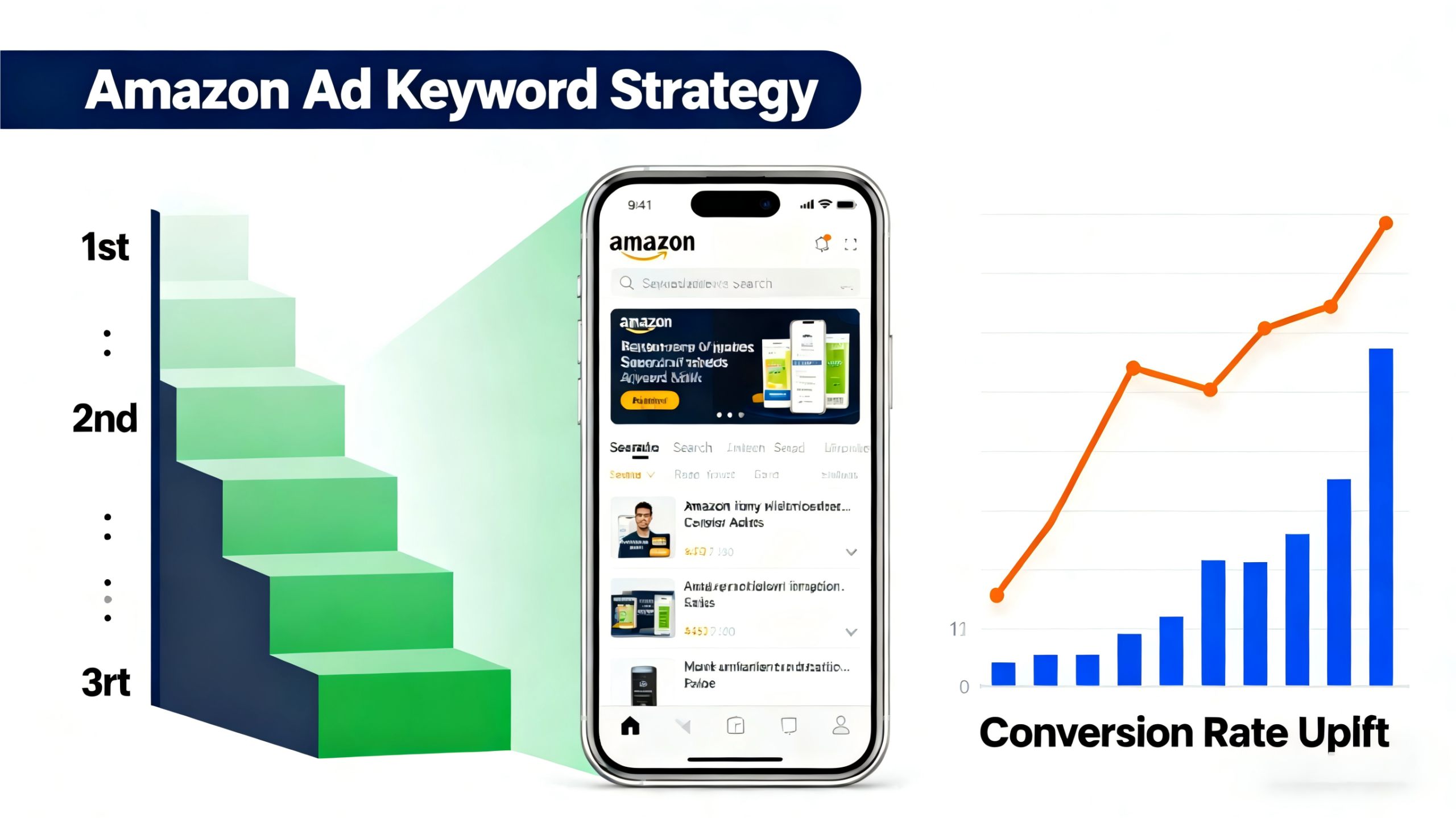Address
304 North Cardinal St.
Dorchester Center, MA 02124
Work Hours
Monday to Friday: 7AM - 7PM
Weekend: 10AM - 5PM

In the hyper-competitive ecosystem of Amazon, advertising efficiency is determined by one crucial factor — keyword targeting. Whether you’re managing Sponsored Products, Sponsored Brands, or Sponsored Display campaigns, choosing and optimizing the right keywords can make the difference between profitable growth and budget drain.
This article provides a comprehensive expert analysis of how to master keyword targeting in Amazon Advertising. We’ll explore keyword match types, segmentation, bid strategies, campaign structure, and real-world case studies that illustrate how data-driven decisions lead to sustained success.
Amazon keyword targeting is fundamentally different from Google Ads. While Google focuses on search intent, Amazon focuses on purchase intent — meaning users are already in the buying phase.
Thus, precision in keyword selection directly affects your visibility, click-through rate (CTR), and return on ad spend (ROAS).
Amazon allows advertisers to use manual and automatic targeting:
While automatic targeting is ideal for discovery, manual targeting excels at optimization and scaling.
Choosing the right match type is critical to controlling traffic quality. Amazon offers three main match types: broad, phrase, and exact.
Use Case:
Tactic:
Start with low bids and analyze the Search Term Report to isolate high-performing variations. Move them to phrase or exact match campaigns for tighter control.
Use Case:
Tactic:
Use phrase match for buyer-intent modifiers like “best,” “cheap,” or “for men.” This balances traffic volume with precision.
Use Case:
Tactic:
Use exact match for your top 10–20% converting keywords and allocate higher bids for maximum visibility.
Amazon’s Search Term Report is a goldmine for insight. It shows:
Tactic:
Tools like Helium 10 Cerebro, Jungle Scout Keyword Scout, or Amazon Brand Analytics provide insights into:
Example:
A sports brand selling yoga mats used Cerebro to find “eco-friendly yoga mat” (7,200 monthly searches, 18% conversion). They added it as an exact match keyword and saw a 25% boost in ROAS within two weeks.
Amazon keyword trends fluctuate seasonally. For example:
Tactic:
Use Brand Analytics or Google Trends to anticipate seasonality and adjust bids 2–3 weeks before the demand curve peaks.
Negative keywords prevent your ads from appearing for irrelevant searches.
For example, if you sell premium headphones, you might exclude:
Tactic:
Pro Tip:
A well-optimized negative keyword list can reduce wasted spend by 15–25% monthly.
This method involves peeling high-performing keywords from broad/automatic campaigns and “sticking” them into new exact match campaigns with dedicated budgets.
Example:
A pet supply brand discovered that “grain-free dog treats” had a 4% conversion rate in an automatic campaign. They moved it into an exact match campaign and increased the bid by 20%, resulting in 35% higher sales at the same ACoS.
This structure allows for controlled scaling and efficient budget allocation.
Avoid lumping multiple ASINs into one ad group. Instead:
Result:
More relevant ads, higher CTR, and stronger Quality Score (which lowers CPC).
Ideal for conservative budgets. Amazon lowers bids when conversions are unlikely — minimizing wasted spend.
Amazon adjusts bids by up to 100% when conversions are likely.
Use Case: High-performing exact match campaigns with proven keywords.
Recommended for testing or A/B comparison of new keywords to gauge pure performance.
Combine dynamic bidding with placement adjustments (Top of Search + Product Pages) to capture premium traffic zones.
Targeting competitors’ branded keywords can capture high-intent traffic from shoppers already considering alternatives.
Example:
A new razor brand targeted “Gillette razor blades” as a phrase match keyword. By offering a lower price and highlighting sustainability, they achieved a CTR of 1.2% and converted 7% of traffic — a significant share of their competitor’s market.
Caution:
Avoid using competitor brand names in ad copy or titles (policy violation). Use them only in backend targeting.
ABA offers data on Top 3 Clicked ASINs and Share of Voice per keyword.
Example:
A skincare company used ABA to find that for “vitamin C serum,” 60% of clicks went to only three competitors. They optimized their title with keyword-rich phrasing (“Vitamin C Serum with Hyaluronic Acid”) and improved imagery, increasing CTR by 28%.
Amazon advertising success depends on iteration, not intuition.
Follow this continuous cycle:
This feedback loop ensures your ad account remains lean, profitable, and adaptive to changing trends.
A mid-sized electronics brand selling Bluetooth earbuds implemented a structured keyword strategy:
Results after 45 days:
Keyword targeting in Amazon Advertising is both a science and an art. While tools and data guide your decisions, success comes from constant experimentation, segmentation, and disciplined optimization.
To summarize the winning framework:
In the ever-evolving Amazon marketplace, those who master keyword targeting gain not only visibility — but profitability, dominance, and sustainable growth.